A trip to Gangtok isnt complete without visiting Nathula Pass, Tsomgo Lake and Baba Mandir. After having a leisure sight-seeing day at Gangtok, the next day we went for a visit to Nathula Pass, Tsomgo Lake and Baba Mandir to complete our East Sikkim exploration.
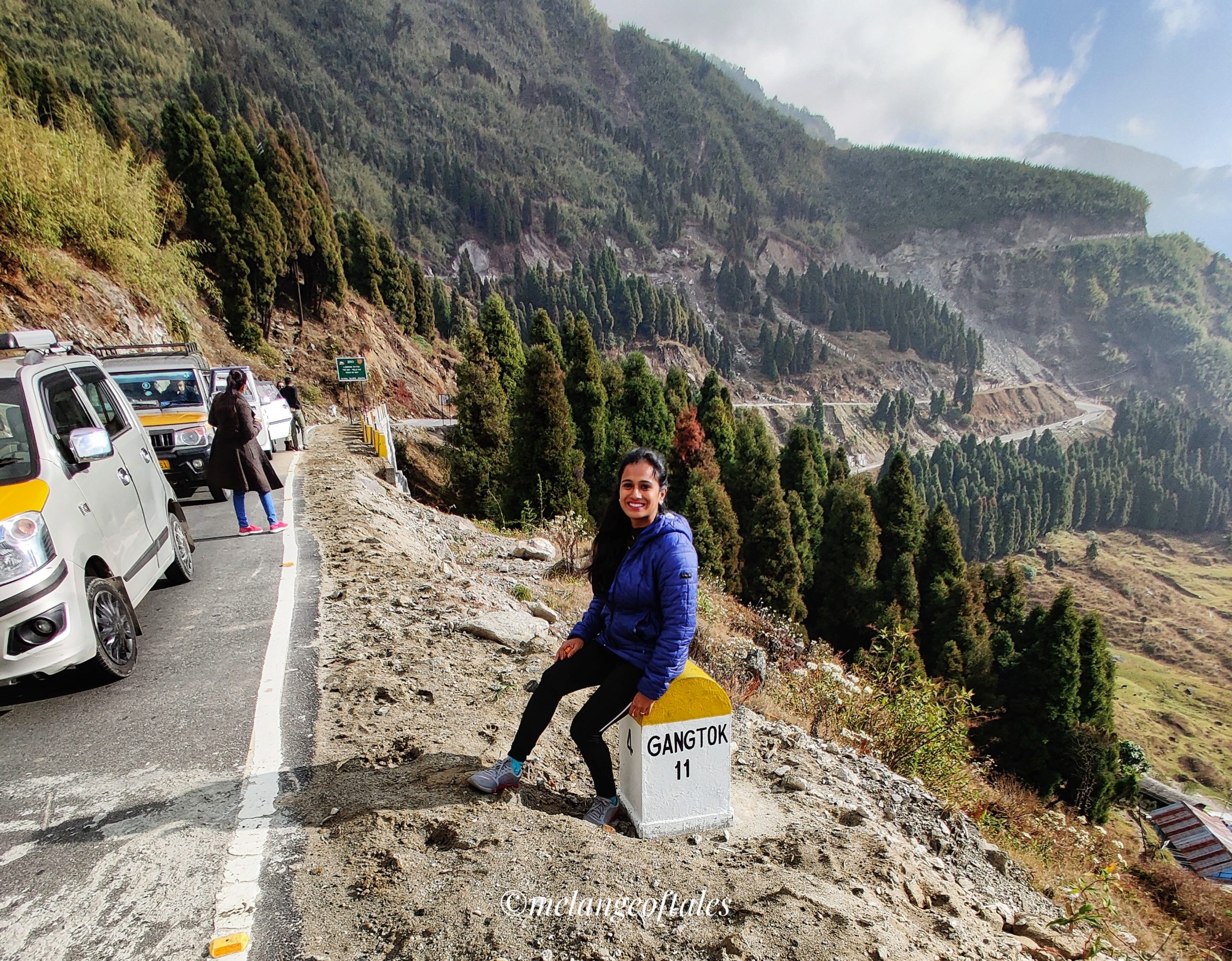
How to commute?
Nathula Pass can be visited through a reserved or shared vehicle from Sikkim Government approved tourist operators. As I have already mentioned in my blog post on Gangtok, you will find Tourist Operators/Travel Agencies on MG Marg who will take you for a day visit to Nathula Pass, Tsomgo Lake and Baba Mandir in East Sikkim.
You can find the list of Government Authorised Travel Agents in Sikkim while you plan your travel in advance.
Note: Hiring a city taxi or self-driving to Nathula Pass is not allowed.

Cost: Rs.700-1000 per person (including permit cost) for a combined tour of Nathula Pass, Tsomgo Lake and Baba Mandir from Gangtok in a shared cab.
A reserved vehicle would cost around Rs.6500-Rs.8000 for Xylo/Innova/Scorpio.
A reserved vehicle for just Baba Mandir and Tsomgo Lake would cost around Rs.4000.
Note:
1. The permit per car to Nathula pass (set by the Government) is charged at Rs.3000. This doesn’t have to be paid separately if you have already booked a shared/reserved cab which includes Nathula in the itinerary.
2. I would recommend you to commute by Mahindra Xylo/Toyota Innova/Mahindra Scorpio since there are many hair-pin bends on this route and you will be more prone to get back ache in case you commute through smaller hatchbacks like Maruti WagonR.

Is there a entry permit/pass to be purchased?
To visit Nathula Pass, Baba Mandir and Tsomgo Lake in East Sikkim, vehicle permit and pass for the tourists is compulsory. The driver /travel agency has to be informed one day prior regarding the visit so that they can get the permit/pass ready.
To visit Nathula Pass, permits are not issued for children below 5 years since they are not allowed at such altitude and also due to security purposes.
How to get the entry permit/pass?
2 passport size photos and 1 Government ID Proof photocopy (PAN card isnt accepted) has to be given to the Agency. They will visit the Check Post one day before your scheduled travel and get your entry permit/pass ready.
Note: It is better you handover the above mentioned documents the day you arrive at Gangtok or before 12 noon on the Gangtok sight-seeing day. You can also book your East Sikkim trip with a Travel Agency emailing them the necessary documents before your arrival at Gangtok.
Read also: MUST READ Gangtok Travel Guide and Things to do
What clothes to wear?
I visited Sikkim in the month of December, so I had to wear my bomber jacket (has the ability to withstand cold till -15⁰C) over my t-shirt, gloves (needed especially at Nathu La), woollen cap, woollen socks and shoes.
I rented snow boots for Rs.100 from the roadside shop in 15th Mile which is close to Tsomgo Lake. Most of the drivers have a stopover at the shop they have a tie up with so that there is a possibility you will end up buying something from their shop. The shops there are all completely made of wood and it can get pretty cold when you get inside the shop. Since I felt very cold, I bought a fleece bottom for Rs.400 to wear over my pants only to realise that outside the shop it wasn’t as cold. We also purchased Tea and a bowl of Maggi noodles for Rs.20 & Rs.50 respectively.
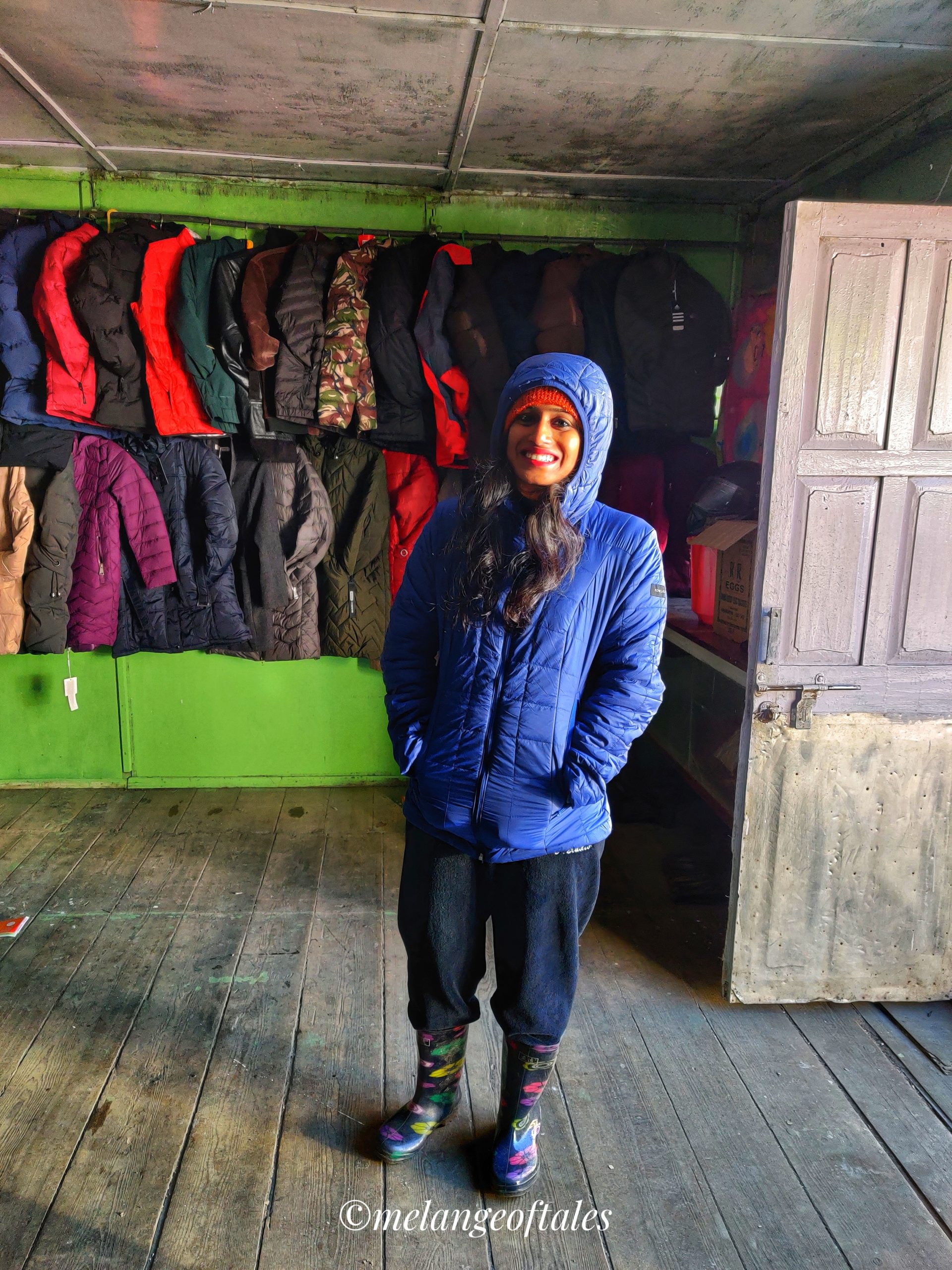
During summers I would still recommend you to wear comfortable clothes, jacket, gloves, woollen cap, woollen socks and shoes.
Nathu La Pass (Altitude: 14,140 ft)
The ancient Silk Route spreads over 10,000 km and the location of Nathu La Pass in East Sikkim falls on the silk route where silk, gold, wool and many other essentials were traded. The pass was opened for trade between Sikkim (India) and Tibet (now considered to be a part of China) in 1894 after the rulers of the respective countries agreed to sign an agreement to increase trade between the two nations.

The Silk Road was operational till 1962 after which a war broke out between India and China and the trade was stopped for 44 years. Many lives were lost in both the countries and the pass was closed. You can see a memorial while climbing up the pass. The trading reopened again in 2006 after signing various agreements between the 2 countries. The Indo-Chinese trade market is now functional every year from June to September between Monday to Thursday (4 days a week). The trade markets are located at Sherathang and Rinchangang on the Indian and Tibetan sides respectively.
Nathu means ‘listening ears’ and La means ‘pass’ in Tibetan. Nathula is present at a distance of about 53 kms from Gangtok and takes 2-2.5 hours to reach by car. It is allowed only for Indian nationals and also prior permission is required, details of which I have mentioned earlier in this same blog post.
When to visit Nathula?
The best time to visit the pass would be Feb – May and Oct – Dec.
The pass is open for tourists to visit only from Wednesday – Sunday (closed on Mondays and Tuesdays).
In case of heavy snowfall or rainfall, the pass will be closed for tourists.
How long to stay at Nathula?
The oxygen level is low considering the altitude of the pass. I would say spending 30 minutes at the pass is sufficient.

Things about Nathula
- Photography is strictly prohibited at the pass (You can take pictures at the entrance).
- Climb the staircase slowly taking regular pauses in order to not gasp for breath.
- You can see Indian and Chinese soldiers on either sides.
- Once you climb the staircase you will notice that you are few feet away from the Indo-China border (I wasn’t able to believe it until I went there and experienced this).
- There is a small resting place towards the left of the staircase. The room is air conditioned and you can get drinking water.
- The soldiers are friendly.
We withdrew cash from India’s Highest ATM (Axis Bank) at Thegu on the way to Nathu La pass. Since it was army area unfortunately we weren’t able to click pictures of it.
Baba Mandir (Altitude: 13,123ft)
Baba Harbhajan Singh Mandir (temple) is around 52 kms from Gangtok. The temple is named after an Indian Army soldier who died by slipping and falling into a steep narrow valley. It is believed that he appeared in the dream of one of the soldiers asking him to build a samadhi for him.

While returning from Nathula pass you will be taken to the New Baba Mandir which was built in 1982 for the convenience of the tourists. The original (old) Baba Mandir is at a distance of 9 kms from the new one for which the driver asked us an extra amount of Rs.900 per car.
Baba Mandir was very unique from all the temples built by soldiers that I had seen earlier. The soldiers there believe that the spirit of Baba Harbhajan Singh is still guarding the area. They had an office room and a bed room with all the set up ready for Baba Harbhajan Singh to carry out his every day duty. It is also said that the bed sheets get crumbled and shoes get muddy everyday (not sure how true this is).
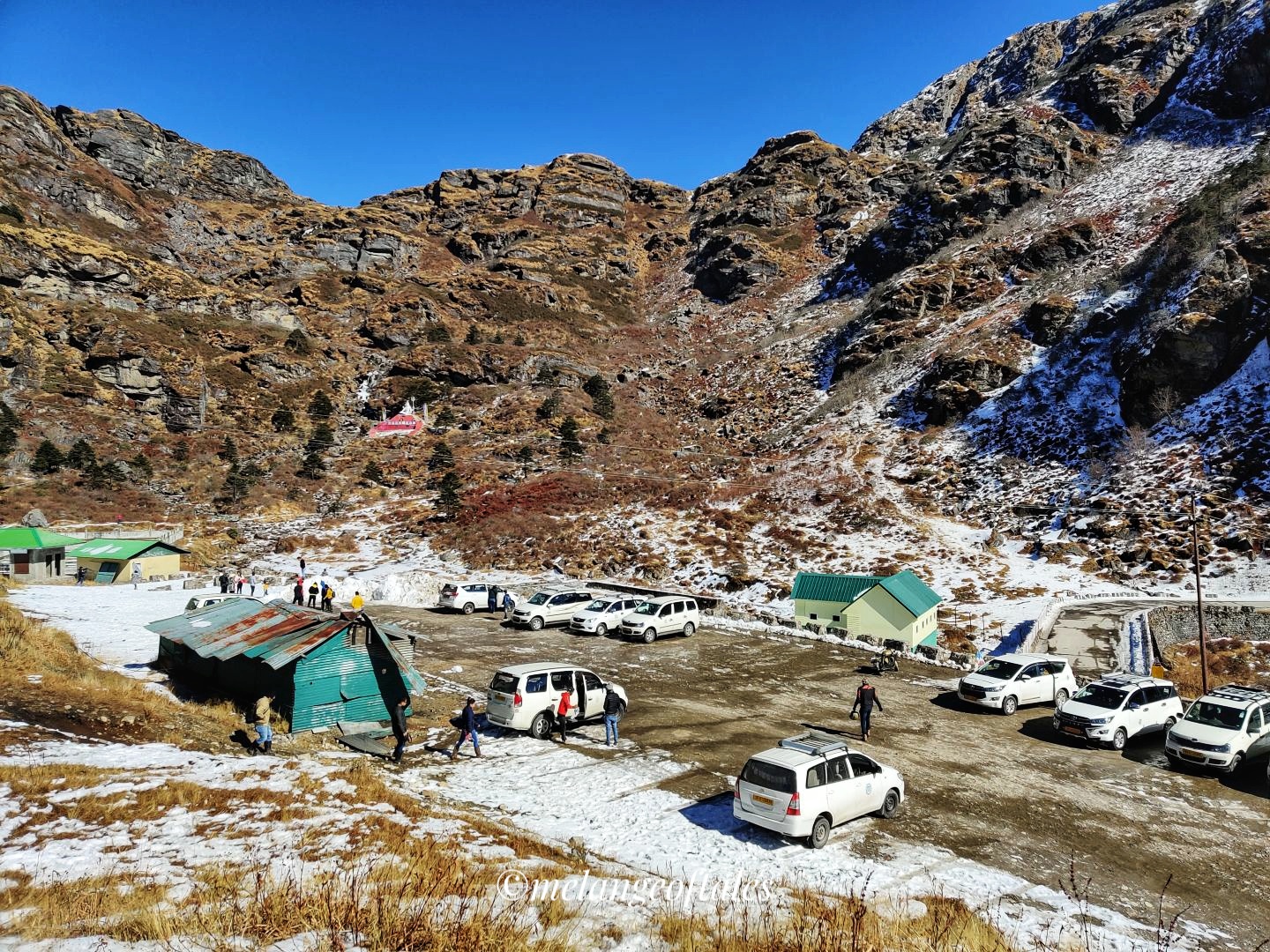
There was a restroom and café right opposite to the temple. Photography was not allowed inside the temple. The view of the Nathang Valley from the temple was absolutely breath-taking.
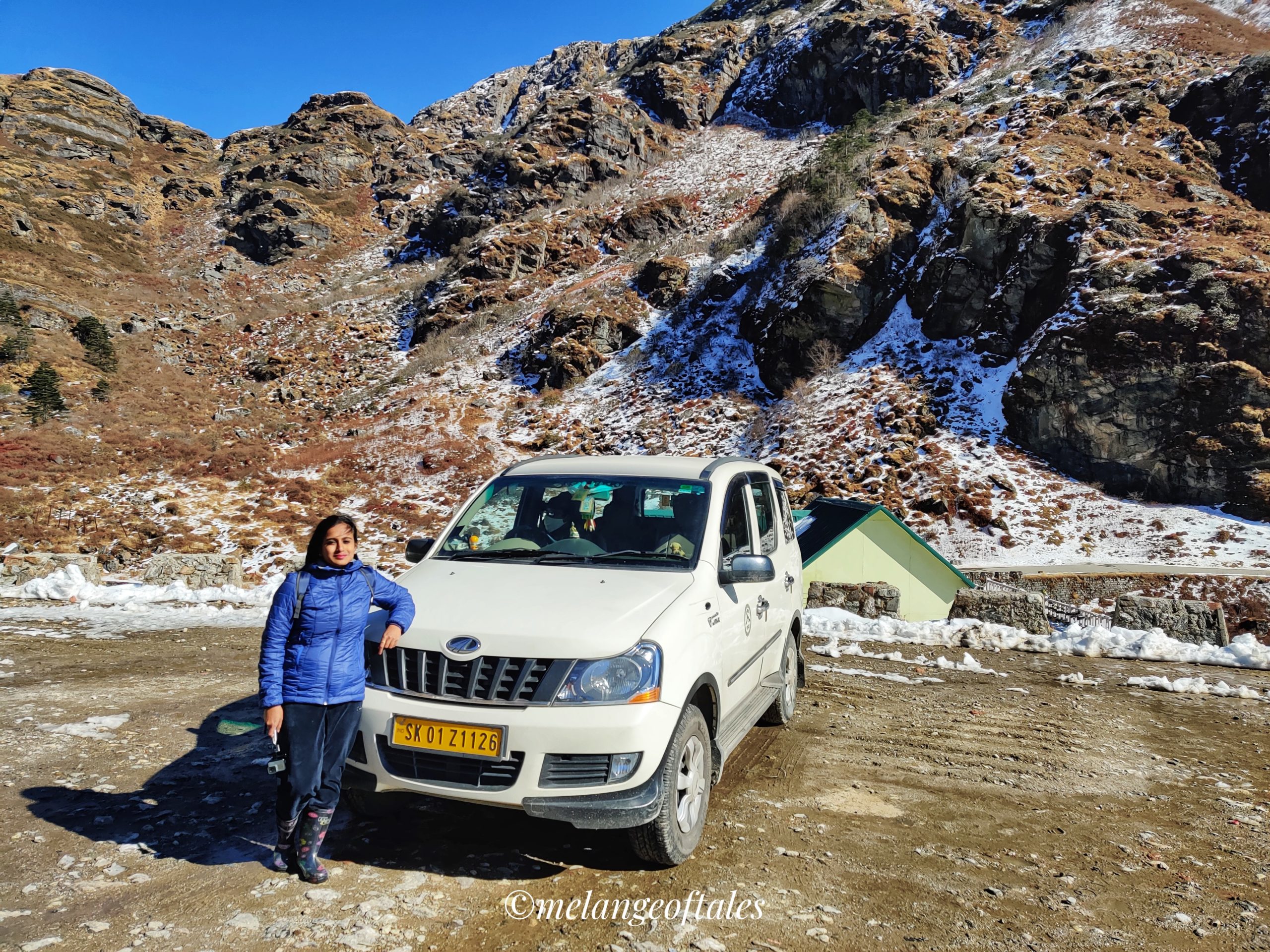
Tsongmo/Tsomgo/Changu Lake (Altitude: 12,313 ft)
The lake is at a distance of 40 kms from Gangtok and 15 kms before Nathu La pass. The lake looked surreal in December and half of the lake was frozen. The colors at the lake were incredibly beautiful. The Yaks added beauty to how the lake already looked.

The lake is 1 km long and considered to be sacred by the locals. Much research has taken place on the colors that the lake reflects during various seasons. Tsomgo lake was magic.

An internal permit is required for tourists to visit Tsomgo lake. Foreigners need special permit to visit the same but they can’t go further than the lake.

Yak ride cost: Rs.400 (for a short ride), Rs.100 (for clicking pictures sitting on the Yak)
There was also ropeway at Tsomgo lake.


Other attractions
Hangu Lake (Altitude: 13,900ft) – It is not a well known lake but said to be very beautiful. You can do paddle boating here.
Kupup in East Sikkim has the world’s highest Golf Course.
Note: To visit these places you will have to talk to the driver/agency before starting the trip otherwise you will be charged more. You will also have to leave early from your hotel in case you want to visit these additional places in East Sikkim.

Things to remember
- Landslides are a common occurrence in Sikkim during rainy seasons.
- Border Road Organization (BRO) takes care of the roads and due to the difficult terrain and frequent landslides they have to lay it often.
- You will be crossing many areas where army is stationed during your day trip, where photography is strictly prohibited.
- Sikkim Government is very strict against littering and it is a punishable offence.
- You will have to start early to make sure you reach back Gangtok early. At 3pm, the clouds start covering the mountains. It gets risky to drive down after that.

You can read more of my travel stories from Sikkim.

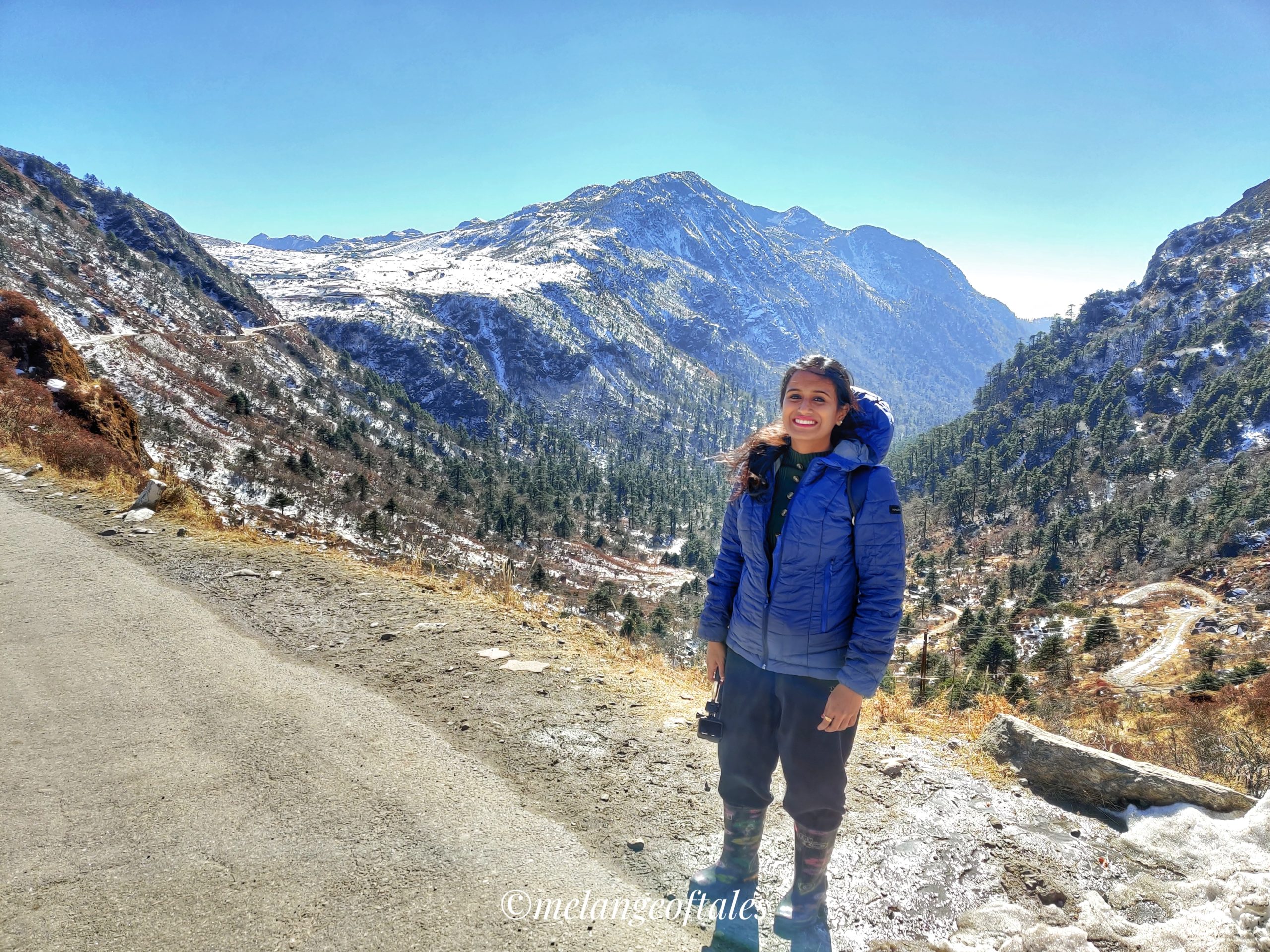
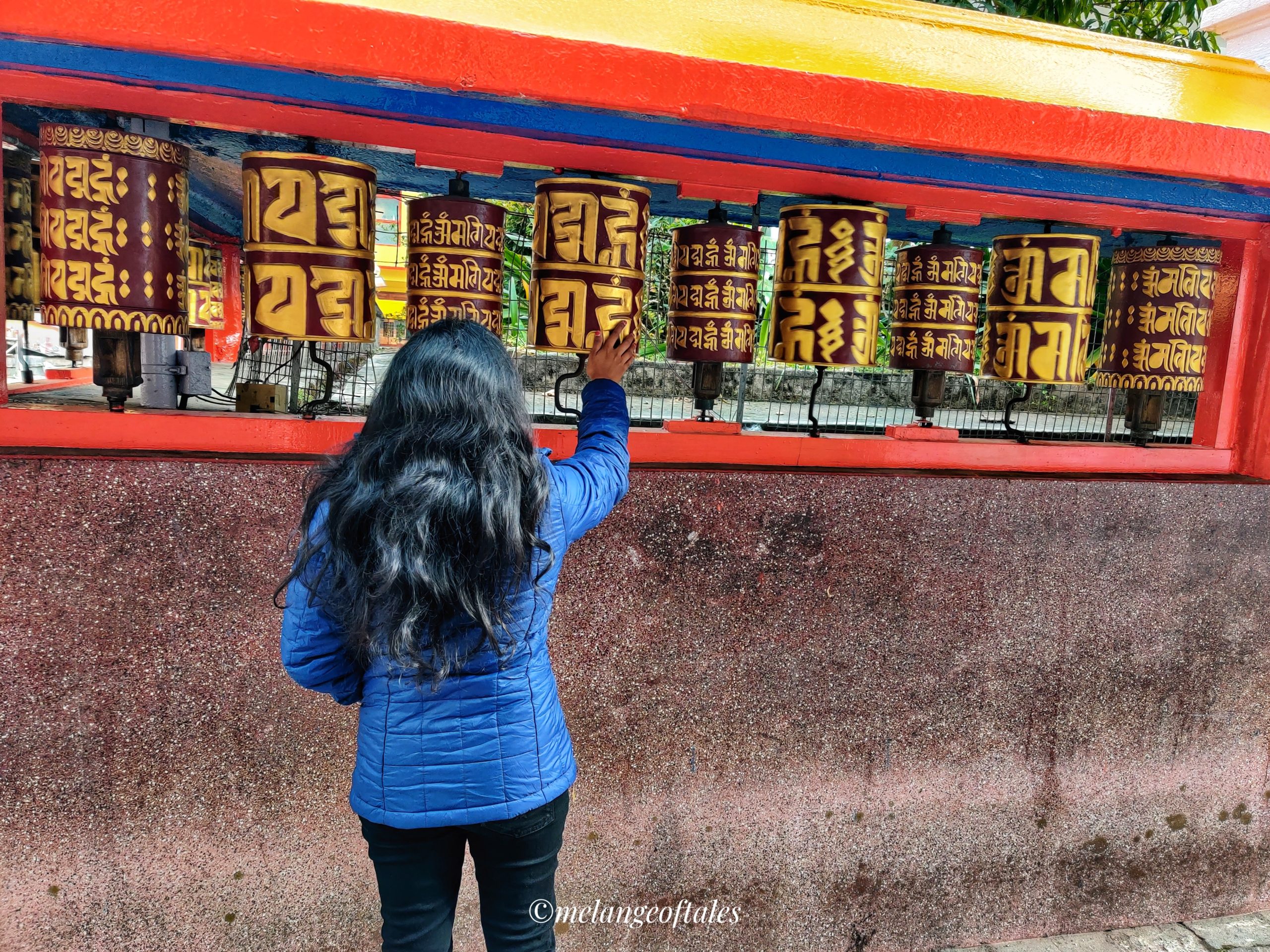
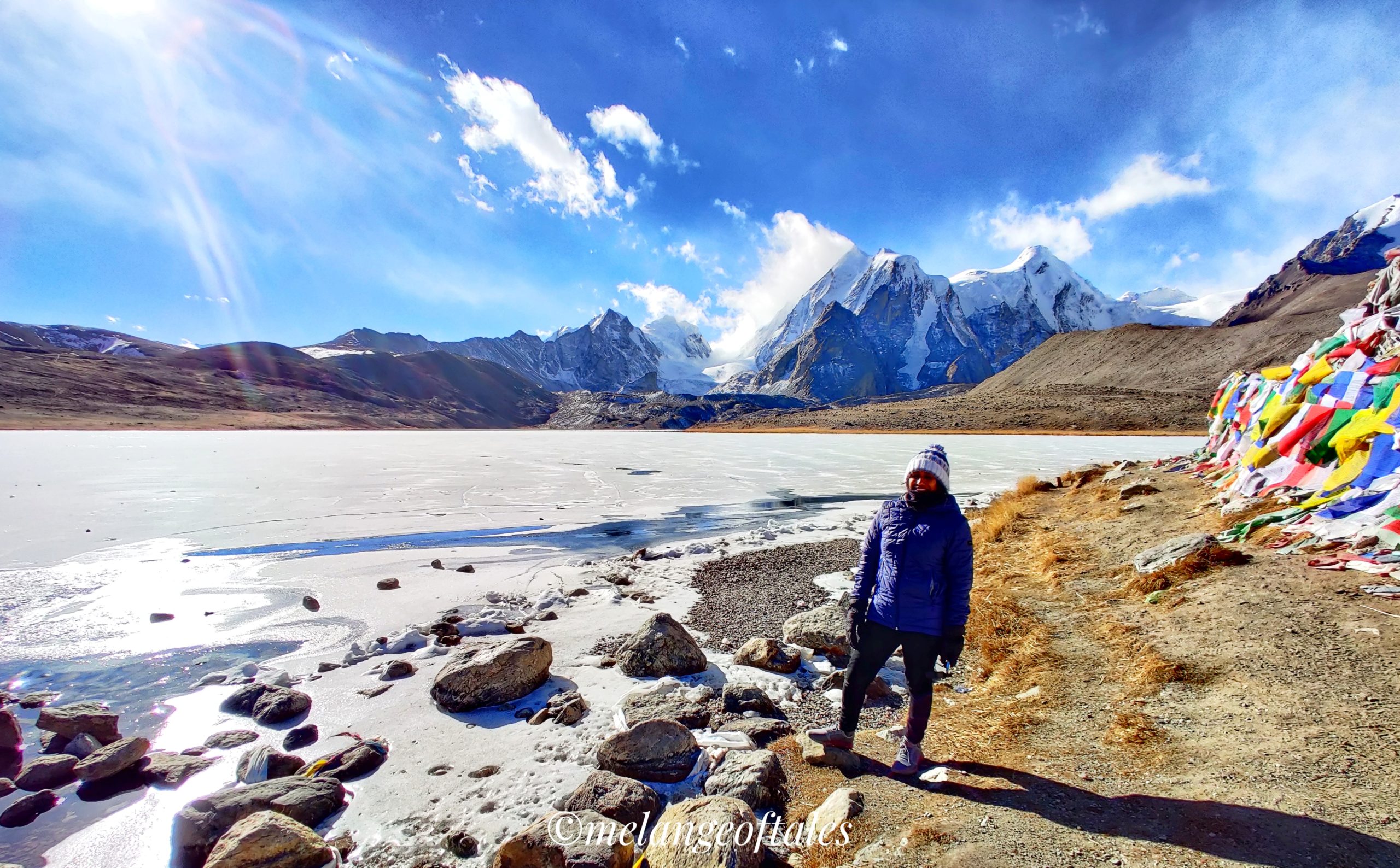

It was a very nice read, Aarthy! Thanks for explaining everything so beautifully 🙂